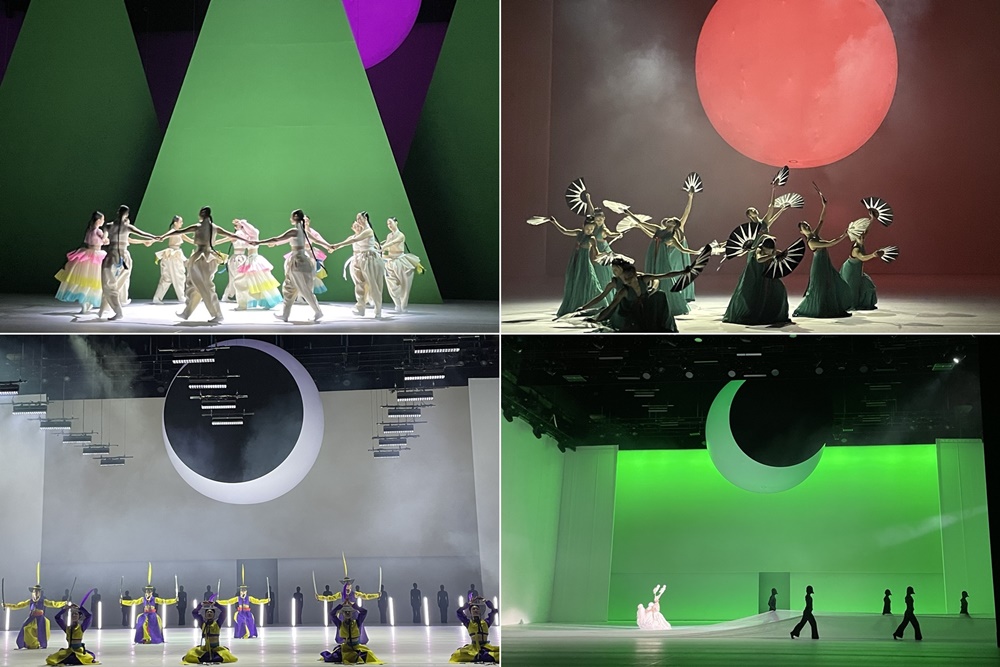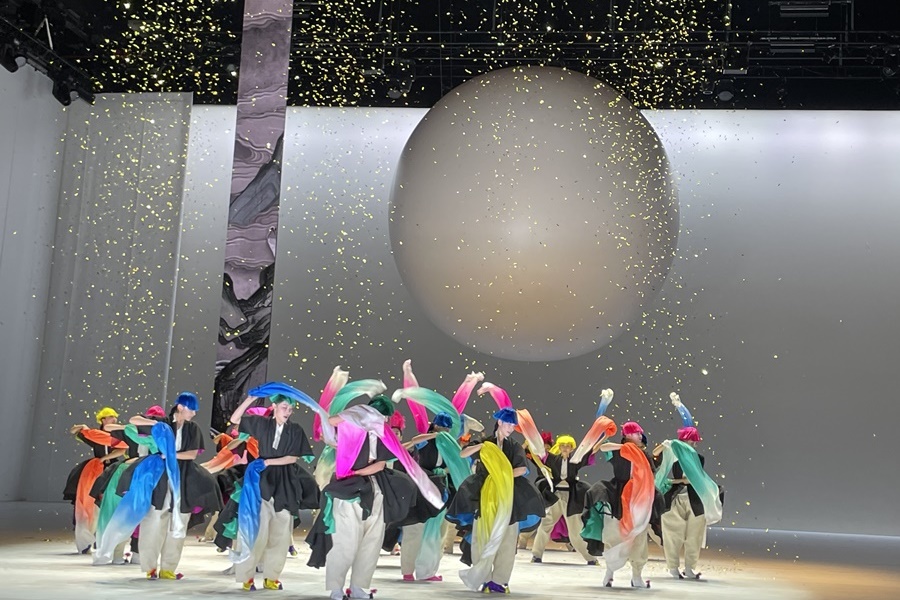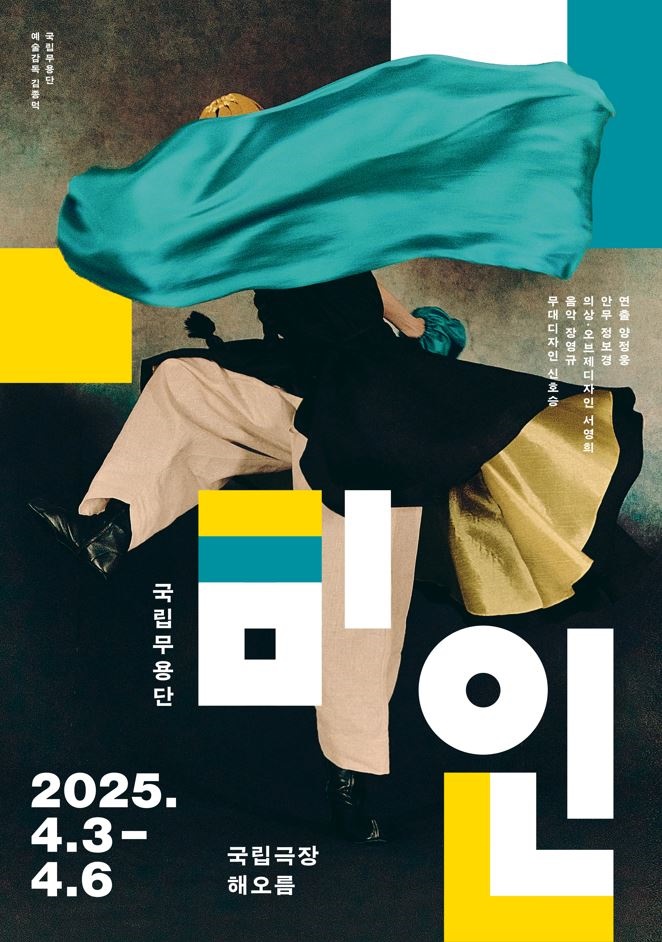
"Paradise," the National Dance Company of Korea's first production of the year, premiered on April 2 at Haeoreum Grand Theater of the National Theater of Korea in Seoul. Clockwise from left are ganggangsullae (circle dance), buchaechum (fan dance), bae gareugi (shamanistic ritual) and kalchum (sword dance). (Kang Gahui)
By Kang Gahui
A full moon rises on stage. The edges of delicate Hanbok (traditional clothing) brush against the transparent frame and the dancer's fingertips gently scatter through the air.
A traditional dance by women begins, bringing to mind the painting "Miindo" (A Beautiful Woman) by Joseon Dynasty (1392-1910) artist Sin Yun-bok (1758-?) and making the audience feel as if they are being sucked into a thick canvas.
The frame is removed and the stage energized in showing modernized versions of notdari balbgi, a folk dance of the Goryeo Dynasty (918-1392); seungmu (Buddhist monk's dance); nabichum (butterfly dance); ganggangsullae (circle dance); bukchum (drum dance); buchaechum (fan dance); kalchum (sword dance); bae gareugi (shamanistic ritual); sanjochum, or a dance with an instrumental solo accompanied by a drum; salpurichum (exorcism dance); and talchum (mask dance) in the listed order.
Twenty-nine female dancers display high energy on stage to portray a new era of women.
"Paradise," the National Dance Company of Korea's first production of the year, was held on April 2 at Haeoreum Grand Theater of the National Theater of Korea in Seoul.
Unlike the stereotype that Korean dance is slow and boring, the performance showcased fancy and fast-paced movements for nonstop excitement.
The dancers spinning in a circle during ganggangsullae suddenly walked like models on the runway of a fashion show. The opening of the sword dance featured light sabers reminiscent of those in the sci-fi blockbuster "Star Wars," while dancers dressed in black hidden in the audience beat drums and quickly passed by.
Another highlight was use of a moon as a stage device. A large air balloon with a diameter of 6.5 m followed the flow of the dance by changing form from a crescent to a full moon and eventually a waning moon. The moon, symbolic of femininity, shifted in harmony with the dance to elicit an even more dramatic atmosphere.

This talchum (mask dance) is unusually performed without masks during "Paradise." (Kang Gahui)
A refreshingly mask-free talchum number featured hairpieces of compelling colors and dynamic movements used to create an atmosphere for the dance.
As a dance more typically done by male performers, the piece saw female dancers put on a new spin on the art.
"Paradise" was directed by Yang Jeong-woong, who oversaw the 2018 PyeongChang Winter Olympics' opening and closing ceremonies; choreographed by Jung Bo Kyung, the dance coach of "Stage Fighter," a reality TV competition program for dance on Mnet; and stage designed by K-pop music video producer Shin Ho-seung.
The eye-catching apparel and objects were created by Seo Young-hee, a first-generation stylist of Vogue Korea.

Official poster for "Paradise" (National Dance Company of Korea)
kgh89@korea.kr